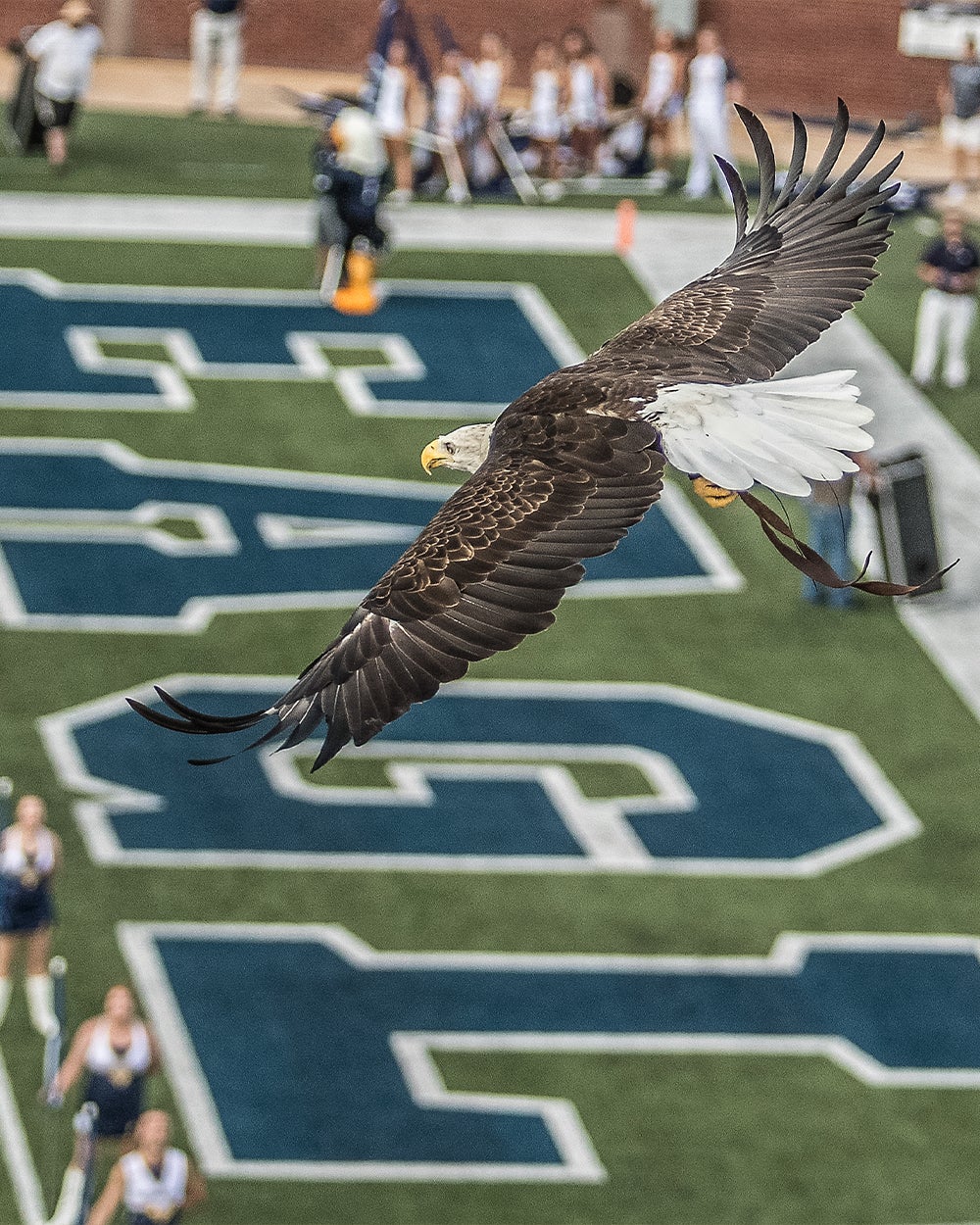Dr. Maxim Durach
Associate Professor of Physics

Office: Math-Physics, Room 1008
Phone: (912) 478-0575
E-mail: mdurach@GeorgiaSouthern.edu
Education
B.S. Physics, St.-Petersburg State Polytechnical University, 2004
M.S. Condensed Matter Physics, St.-Petersburg State Polytechnical University, 2006
M.S. Physics, Georgia State University, 2008
Ph.D. Physics, Georgia State University, 2010
Courses
- Physics 2212K: Principles of Physics II
- Physics 5152: Classical E & M Theory
- Physics 5890: Physics Research Experience
- Physics 7999: Thesis
Research

Dr. Durach’s research group is working in the field of theoretical and computational physics for applications in nanotechnology. His research interests are in the fields of optics, metamaterials, photonics and plasmonics, optoelectronics. Dr. Durach is known for solving the Mansuripur’s paradox by assigning the difference between the Lorentz and Einstein-Laub forces to absorption of spin angular momentum of light. The corresponding torque on matter leads to plasmon drag pinning effect, which Dr. Durach predicted theoretically. The plasmon drag pinning effect is localization of optical forces on electrons in the metal in an angstrom-thick layer at the metal boundary, instead of the nanometric skin-depth layer as has been thought before. This localization of plasmon drag effect in the atomic layer at the metal surface causes the light-induced currents in the metal to be extremely sensitive to the atomic environment at the metal interface, which has been observed in the experimen ts at National Institute of Standards and Technology [Strait et al, PRL 123, 053903, (2019)]. The work on plasmon drag effect continues in collaboration with Dr. Noginova’s experimental group and Norfolk State University.
Dr. Durach is also known for pioneering studies of structured light in bianisotropic materials (BAMs). With his undergraduate students Morgan Laballe, Thomas Mulkey, and Robert Williamson he predicted that BAMs can occur in one of 5 topological phases: non-, mono-, bi-,tri-, and tetra-hyperbolic materials. In other studies they demonstrated that structured light can be invariant with respect to specific variations of bianisotropic effective medium parameters, a property complementary to topological robustness to boundary modifications. Hyperbolic metamaterials are applied for emission rate and directivity control. The multi-hyperbolic metamaterials will allow more degrees of freedom in controlling the rate and directivity of light emission than mono- and non-hyperbolic media considered so far, while topological robustness to BAM parameters will be applied to achieve undisturbed light propagation.

Working with his graduate students David Keene and Matthew Lepain students he predicted that nanorod metasurfaces, which can be thought of as monolayers of hyperbolic metamaterials, act as the ultimately thin sub-100 nm wave plates, orders of magnitude thinner than the micron-scale wave plates in use today. This research appeared on the cover of December 2016 issue (issue #528) of the oldest physics journal Annalen der Physik (published since 1799; famous for Einstein’s Annus Mirabilis papers). Other results from Durach’s research group include introduction of the concepts of optical neutrality (invisibility) as .phase transition between metal-like and dielectric-like metamaterials (work with Reed Hodges), metasurface Tamm plasmons and hyperbolic metasurface cavities (work with David Keene), and description of plasmon drag in profile-modulated metal films (work with Matthew Lepain).
The full list of my publications can be found on google.scholar here
Selected publications:
- M. Durach, N. Noginova, book chapter “Plasmon Drag Effect. Theory and Experiment” in “Anisotropic and Shape-Selective Nanomaterials: Structure-Property Relationships” (Springer, 2017)
- D. Keene, M. LePain, M. Durach, “Ultimately thin metasurface wave plates”, Annalen der Physik, 528(11-12), p. 767 (2016) — Selected for the cover of December 2016 issue of Annalen der Physik
- M. Durach, R. Williamson, M. Laballe, T. Mulkey, “Tri- & Tetra-Hyperbolic Iso-frequency Topologies Complete Classification of Bi-Anisotropic Materials”, arXiv:1909.11892 (2019);
- T. Mulkey, J. Dillies, M. Durach, “The Inverse Problem of Quartic Photonics”, Optics Letters, 43, 1226-1229 (2018);
- R. Hodges, C. Dean, M. Durach, “Optical neutrality: invisibility without cloaking” Optics Letters, 42, 691-694 (2017)
- M. Durach, N. Noginova. “Spin angular momentum transfer and plasmogalvanic phenomena”, Physical Review B 96(19), 195411 (2017)
- M. Durach, N. Noginova, “On the nature of the plasmon drag effect”, Physical Review B (Rapid Communication), 93(16), 161406 (2016)
- D. Keene, M. Durach, “Hyperbolic Resonances of Metasurface Cavities”, Optics Express 23, pp. 18577-18588 (2015).
- R. Hussain, D. Keene, N. Noginova, M. Durach, “Spontaneous emission of electric and magnetic dipoles in the vicinity of thin and thick metal”, Optics Express 22, pp. 7744-7755 (2014).
- M. Durach, A. Rusina, “Transforming Fabry-Perot Resonances into a Tamm mode”, Physical Review B 86, pp. 235312-1-6 (2012)
- M. Durach, A. Rusina, M. Kling, M. Stockman, “Metallization of Nanofilms in Strong Adiabatic Electric Fields”, Physics Review Letters 105, 086803-1-4 (2010)
- M. Durach, A. Rusina, M. Stockman, “Giant surface-plasmon-induced drag effect in metal nanowires” Physical Review Letters, 103(18), 186801 (2009)
- M. Durach, A. Rusina, V. Klimov, M. Stockman, “Nanoplasmonic Renormalization and Enhancement of Coulomb Interactions”, New Journal of Physics 10, pp. 105011-1-14 (2008)
- M. Durach, A. Rusina, M. Stockman, K. Nelson, “Toward Full Spatiotemporal Control on the Nanoscale”, Nano Letters 7, pp. 3145-3149 (2007)
Last updated: 2/6/2024
